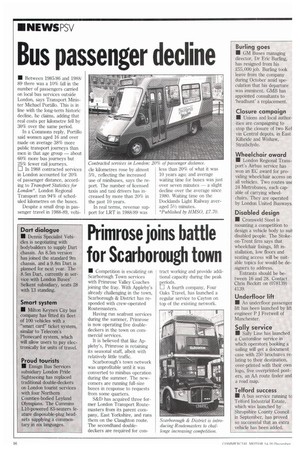Bus passenger decline
Page 18

If you've noticed an error in this article please click here to report it so we can fix it.
• Between 1985/86 and 1988/ 89 there was a 10% fall in the number of passengers carried on local bus services outside London, says Transport Minister Michael Portillo. This is in line with the long-term historic decline, he claims, adding that real costs per kilometre fell by 30% over the same period. In a Commons reply, Portillo said women aged 16 and over made on average 38% more public transport journeys than men in that age group — about 60% more bus journeys but 25% fewer rail journeys.
Ei In 1988 contracted services in London accounted for 20% of passenger distance, according to Transport Statistics for London*. London Regional Transport ran 94% of scheduled kilometres on the buses.
Despite a small drop in passenger travel in 1988-89, vehi de kilometres rose by almost 5%, reflecting the increased use of minibuses, says the report. The number of licensed taxis and taxi drivers has increased by more than 20% in the past 10 years. In real terms, revenue support for LRT in 1988/89 was
less than 20% of what it was 10 years ago; and average waiting time for buses was just over seven minutes — a slight decline over the average since 1980. Waiting time on the Docklands Light Railway averaged 51/2 minutes.
*Published by HMSO, 17.70.




































































































